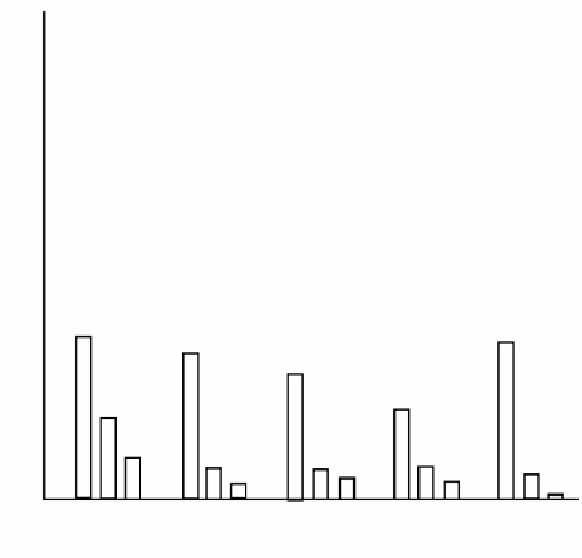Environmental Engineering Reference
In-Depth Information
Effects of air treatments on radon decay product concentrations. (From
Hinds, W.C. et al.,
Figure 12.15
JAPCA
, 33, 134, 1983. With permission.)
The main reason for using an air cleaner in residential environments is
to reduce the severity and prevalence of symptoms associated with allergy
or asthma. Several studies have shown limited but less-than-definitive dim-
inution of symptoms of allergy and asthma in patients in controlled studies
using portable and in-duct high-efficiency air cleaners.
3.
Radon control
Because of their particulate nature, radon decay product (RDP) exposures
can, in theory, be significantly reduced by using an air cleaner. Radon decay
products attached to particles were observed to have been reduced by 70%
and 89%, respectively, in a 78 m
chamber in studies which evaluated the
performance of portable electronic and HEPA air cleaners. However, use of
HEPA filters resulted in a threefold increase in unattached (to particles) RDP
activity. The effects of air cleaning on RDP concentrations can be seen in
Though air cleaners are apparently relatively effective in reducing air-
borne RDP levels, increases in the unattached fraction relative to the attached
fraction by HEPA filtration is of unknown, but worrisome, public health
consequence since unattached RDPs can penetrate more deeply into the
lungs. Consequently, USEPA does not recommend the use of air cleaning to
reduce exposure to RDPs in residences.
3






















































































